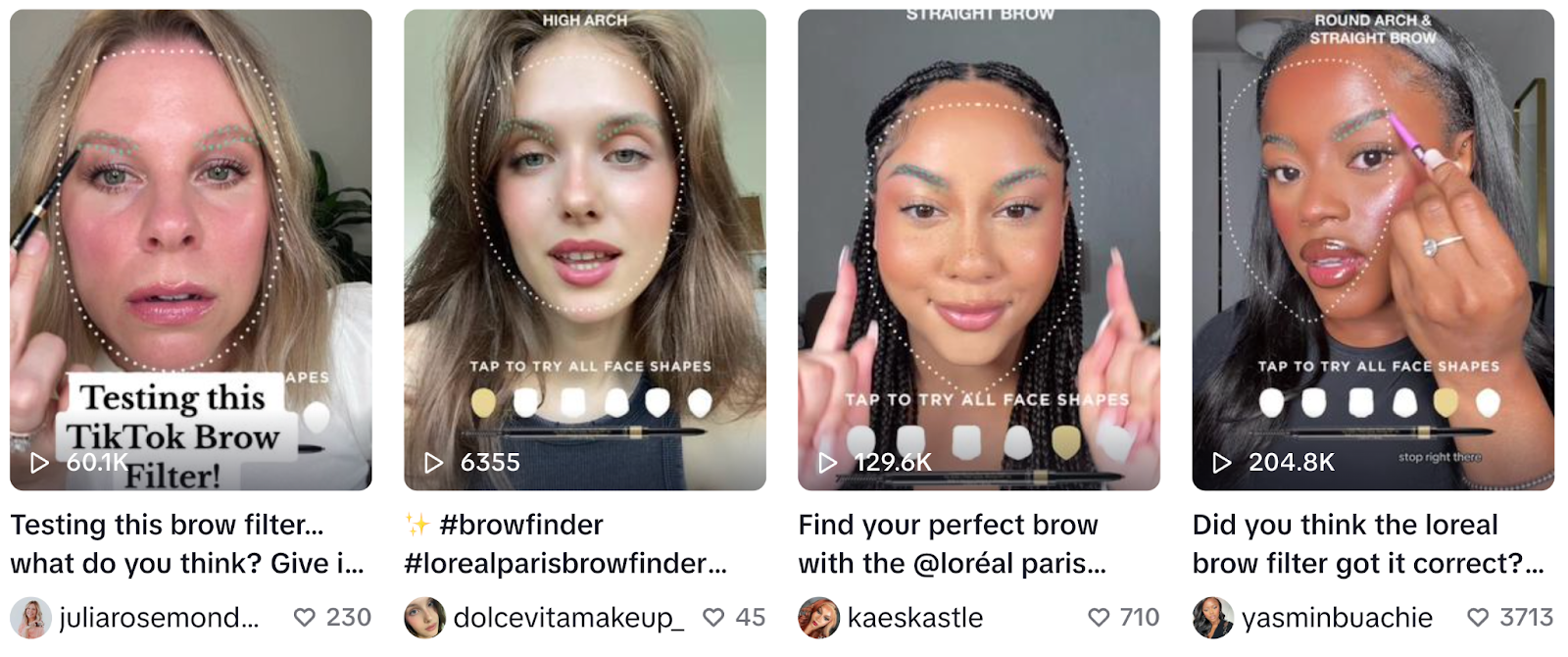Engagement Evolved: AR in Marketing Today

Digital marketing has evolved quickly—spanning the birth of social media, ad targeting, and cookies to the dominance of mobile, video, and personalization in less than two decades. Augmented reality (AR) has emerged as another groundbreaking force in this dynamic field, transforming the way brands engage their customers.
AR offers an interactive experience that layers digital enhancements over the real world, and its applications in marketing span many industries, including retail, tourism, entertainment, and food. Unlike virtual reality (VR), which offers a completely digital environment, AR creates an immersive experience by bridging the user’s digital and physical worlds, usually via a smartphone or tablet, making it more practical for everyday marketing applications.
This distinction has positioned AR as a widely accessible technology that can be highly effective in captivating consumers. In a 2021 research report, 74% of respondents agreed that ads featuring AR would be more likely to capture their interest than normal ads. And the recent launch of the Apple Vision Pro indicates that AR tech will continue to become an increasingly integral part of our daily lives, and therefore our marketing strategies.
Current Applications of AR in Marketing
In my previous role as an advisor to actuality.live, a pioneering platform at the forefront of AR integration into live events and marketing strategies, I gained firsthand experience with the power AR has to create innovative and memorable engagement opportunities. From film promotion and virtual try-ons to social media filters and interactive advertising, the applications of AR in marketing are vast. Here are some notable applications of AR advertising from top brands in recent years:
Ikea Place
Apple made Ikea a launch partner for its ARKit back in 2017, positioning the brand as a pioneer of new retail technology. Its app, Ikea Place, can stage virtual furniture in a three-dimensional space via a smartphone’s camera, enabling customers to visualize the product’s proportion, style, and functionality in their actual homes before making a purchase. The company has since expanded its AR offering with another app, Ikea Studio, which enables users to design entire rooms.
Amazon Salon
In 2021 the e-commerce giant opened its only physical salon featuring AR as a prominent part of its offering: The technology lets customers virtually experiment with different hair colors and styles before making a real-world commitment.
Gucci Sneaker Garage
Gucci was a pioneer among high-end brands, facilitating virtual try-ons for its shoes in 2019. In 2021 the company took the concept one step further, releasing the first digital-only pair of sneakers using AR. Users can purchase and wear them outside of the Gucci app, in virtual worlds such as Roblox or VRChat.
Snap Shack
Shake Shack partnered with Snapchat during 2021’s AdWeek to create an AR-enabled immersive pop-up food experience in New York City. During the four-day event, the physical store featured a giant french fry and a virtual try-on mirror for custom merchandise, both of which could be activated using Snapchat.
Sony
When Sony partnered with AWS, it utilized AR to promote the movie release of Jumanji: The Next Level. In the first voice-activated AR experience, users visiting the website on their mobile device were offered a Jumanji map and the opportunity to explore three locations featured in the film. Sony shot exclusive video content with the cast for the virtual experience and achieved high engagement as a result.
These examples demonstrate the breadth of recent AR applications in advertising, each focusing on transforming the customer experience. In fostering a deeper level of interaction, AR provides consumers with a richer understanding of products or services before they purchase, enhancing their decision-making process.
As AR becomes a mainstay in the digital marketing realm, brands are finding ever more creative ways to apply the technology in their campaigns, including social media projects.
Today, social media presence is considered a vital growth asset for any business, as consumers increasingly use it as a tool for research, customer service, and shopping. It can also garner greater consumer loyalty: 63% of Instagram users believe the platform allows them to form meaningful connections with brands. AR is being used in social media to deepen these connections and broaden the reach of brands.
With the launch of platforms like Snap AR and Meta Spark Studio, companies can build their own branded filters to increase visibility and engagement, and encourage user-generated content, effectively turning users into brand ambassadors. L’Oreal Paris, for example, introduced the Brow Finder Filter on TikTok, offering users a brow-shaping template to follow. The filter quickly went viral across the platform, amassing thousands of videos in which users try out the template or provide a tutorial.

Using AR on social media brings several other benefits:
- Enhanced brand experience: Social media AR filters personalize the brand experience, making it more engaging and entertaining. The interactive nature of AR filters encourages users to spend more time on the app, thereby increasing engagement rates.
- Viral content creation: AR filters contribute to the creation of viral content. By offering unique and innovative filters, users can create content that stands out, increasing the likelihood of virality. This virality, in turn, attracts more users to the brand, creating a cycle of engagement and content creation.
- Data-driven insights: The use of AR filters allows businesses to gather insights and data on user preferences and behaviors, which can be utilized for targeted marketing strategies and to further enhance user experiences.
When it comes to marketing, social media AR filters should not be underestimated. Companies can expand their reach, strengthen users’ connections to their brand, and generate useful insights in fun, original, and cost-effective ways.
The Future of Augmented Reality in Marketing
AR is more than a fad. It is now a pivotal element in customer engagement across many sectors, and its imprint on digital marketing will only continue to grow. Its application by well-known companies such as Ikea and Amazon, and its prevalence on social media platforms, show a readiness within the marketing industry to embrace the technology, using it to foster deeper brand recognition and loyalty. Here’s what I predict for AR in marketing in the near future:
- Advanced personalization and customization: Future technologies are expected to offer the opportunity for ever greater personalization. Brands will leverage AR to provide consumers with highly customized product visualizations and recommendations based on their preferences and behaviors.
- Integration with artificial intelligence and machine learning: AR technologies will converge with artificial intelligence and machine learning to enable more intelligent and responsive AR experiences. This integration will allow AR systems to learn from user interactions, improving the relevance and effectiveness of marketing campaigns over time.
- Increased use in retail and e-commerce: AR is set to become even more prevalent in retail and e-commerce, with virtual try-ons and in-store navigation becoming standard features. This will enhance the shopping experience, reduce returns, and increase customer satisfaction.
- Expansion beyond mobile devices: The development of new hardware, such as AR glasses, will allow immersive experiences to move beyond smartphones and tablets and become integrated more into daily life. This will open up new avenues for creative marketing and customer engagement.
- Enhanced social media engagement: As AR technology advances, we can anticipate its evolution on social media platforms to include more sophisticated and interactive AR filters and lenses that leverage machine learning for personalized experiences. This could mean filters that adapt to user preferences or react to real-time data, such as weather or location, to create highly relevant and engaging content. Social media platforms may introduce AR functionalities that allow for virtual product trials directly from advertisements, creating a seamless shopping experience.
- Greater accessibility: AR technology will become more accessible and appealing to a wider audience through advancements in smartphone technology. Simplified AR interfaces and improved digital literacy will ensure experiences are intuitive for all users, allowing marketers to engage diverse customer segments effectively.
As the technology develops and users become more accustomed to AR, brands will be able to deepen user engagement, enhance personalization, and create new ways to connect with their audiences.
AR’s integration of digital information with the real world offers endless opportunities to create powerful and versatile marketing tools. With its ability to create immersive, interactive, and personalized customer experiences, AR tech enables brands to capture the attention of diverse audiences in innovative ways. As AR evolves, it will unlock new possibilities in digital marketing, setting the course for a future in which virtual enhancements become part of our everyday brand experiences.



